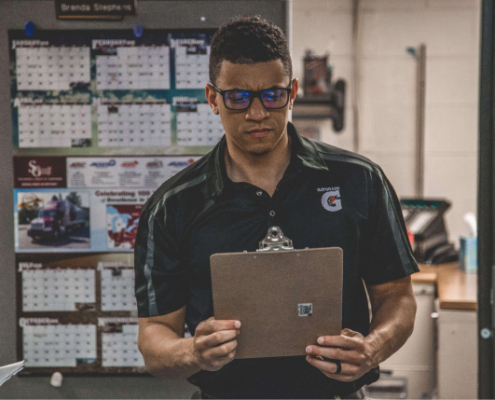Fulfillment or Your Own Warehouse: Which One Is Right for Your E-Commerce Store?
Choosing the right logistics model is a pivotal decision for any online retailer. Whether you’re just starting out or scaling up, deciding between running your own warehouse or partnering with a fulfillment provider can shape the future of your business—impacting everything from costs to growth potential.
Let’s explore the pros and cons of both models to help you decide which makes the most sense based on your stage of growth and business goals.
What Is Fulfillment?
Fulfillment is a comprehensive logistics solution provided by a third-party company like Oripack. It covers everything from receiving inventory and warehousing to packing, shipping, and handling returns. Instead of managing logistics in-house, you delegate these tasks to a specialized partner.
Why Many E-Commerce Brands Switch to Fulfillment
Running a warehouse on your own might seem more hands-on and customizable. But as your business scales, it can become costly, time-consuming, and hard to manage. That’s where fulfillment shines—especially when speed, flexibility, and efficiency are key.
Here are the main reasons growing brands often migrate from self-managed logistics to fulfillment services:
Cost Efficiency from Day One
Operating your own warehouse comes with fixed costs—rent, staff salaries, utilities, and equipment—regardless of how much stock you’re moving. In contrast, fulfillment lets you convert these into variable costs. You only pay for the actual space and services you use, which can lead to immediate savings.
On average, businesses see a 30–40% reduction in warehouse expenses after switching to a fulfillment provider. That’s largely because your own warehouse includes non-revenue-generating areas like hallways, offices, or break rooms—spaces that still cost money to maintain.
Built for Flexibility and Growth
One of the biggest advantages of fulfillment is its ability to grow or shrink with your business. For seasonal brands or companies with fluctuating demand, this flexibility is critical. Fulfillment partners can quickly scale up storage space and staff during peak periods—and just as easily scale down when things quiet down.
By contrast, managing this in-house often means paying for unused space or scrambling to add capacity during high-volume months.
Streamlined Operations Through Automation
Creating efficient logistics processes on your own can be challenging—especially if logistics isn’t your core expertise. Fulfillment centers, on the other hand, operate at scale and bring in-depth knowledge, automation, and best-in-class systems to the table.
Rather than investing time and money into building logistics capabilities, many companies prefer to outsource and focus on what they do best—whether that’s product development, branding, or customer acquisition.
Logistics That Doesn’t Hold You Back
Fulfillment makes it easier to expand into new markets and handle increasing order volumes. Providers like Oripack support fast shipping, including same-day processing and next-day delivery in select regions, which gives you a competitive edge in customer satisfaction.
They also help businesses navigate marketplace sales, integrate with platforms like Amazon, eBay, and Zalando, and manage cross-border shipping—all without the complexity you’d face doing it alone.
Clear Visibility and Control
While logistics is outsourced in a fulfillment model, transparency remains high. Merchants have access to real-time systems where they can track orders, returns, and warehouse activities. Fulfillment providers invest in intuitive platforms that make it easy for businesses to stay informed and make quick decisions—without having to manage operations manually.
Comparing Fulfillment and Your Own Warehouse: Pros and Cons
Here’s a side-by-side look at the benefits and drawbacks of both models:
Advantages of Fulfillment:
-
Variable costs that align with sales volume
-
Flexible scaling based on demand
-
Automated processes and ready-to-use logistics infrastructure
-
Faster shipping, thanks to optimized locations and systems
-
Global reach, including help with cross-border logistics
-
Resilience during peak seasons
-
Lower courier rates through bulk shipping deals
-
Support for marketplaces like Amazon and Allegro
-
Freeing up resources, allowing your team to focus on core business areas
-
Real-time logistics tracking via user-friendly applications
Downsides of Fulfillment:
-
Less physical access to inventory; procedures must be followed to retrieve items
-
Standardized processes, which may limit last-minute customizations
Advantages of Running Your Own Warehouse:
-
Full control over inventory and access to products at any time
-
Complete customization of packaging, labeling, and handling
Disadvantages of a Self-Managed Warehouse:
-
High overhead costs, including rent, staffing, and equipment
-
Limited scalability, both up and down
-
Slower response to growth, as expansions require time and investment
-
Need for specialized logistics expertise, which can be a distraction from core business
-
Time-consuming staff management
-
Risk of inefficiencies, especially without automation or experience
When Fulfillment Makes Sense
Fulfillment becomes a smart move when your business is:
-
Shipping at least 500–1000 orders per month
-
In a growth phase, requiring scalable logistics support
-
Looking to optimize costs and convert fixed expenses into variable ones
-
Focused on core functions like marketing, product development, and sales
When It’s Better to Stick with Your Own Warehouse
In certain situations, handling logistics internally still works best:
-
Early-stage businesses with low order volumes
-
Brands with very specific packaging or storage needs
-
Products requiring unique handling, such as hazardous materials
-
Companies that rely on constant, hands-on inventory access
Stay Flexible and Keep Evolving
E-commerce is constantly shifting, and so should your logistics strategy. Whether you choose fulfillment or stick to your own warehouse, it’s essential to reassess regularly and adapt as your business grows.
Start small, test what works, and make changes as you gain experience. Watching what other successful online stores are doing—and learning from their logistics choices—can also offer valuable insight as you scale.










Leave a Reply
Want to join the discussion?Feel free to contribute!